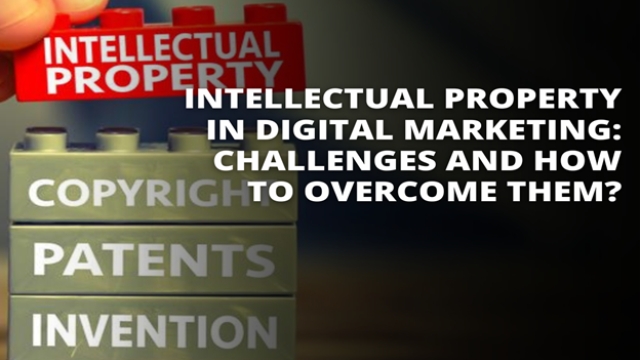
Unlocking the Power of Originality: Navigating the World of Intellectual Property

In a world brimming with ideas and creativity, the concept of intellectual property plays a pivotal role in protecting and harnessing the power of originality. From inventions to artistic works, intellectual property encompasses a broad spectrum of intangible assets that hold immense value in today’s knowledge-based society. It safeguards the rights of creators, encouraging innovation and fostering a climate of fair competition. As we navigate this intricate landscape, it becomes essential to explore the ins and outs, the rights and responsibilities, of intellectual property. In this article, we delve into the world of intellectual property, unraveling its significance and guiding you through the various aspects that define it. Traverse this intellectual landscape with us as we uncover the nuances and potential it holds for both creators and consumers alike.
Understanding Intellectual Property Laws
Intellectual property laws are a fundamental aspect of safeguarding and promoting innovation in today’s fast-paced world. These laws grant creators and inventors exclusive rights over their original works, encouraging their creativity and ensuring they can reap the rewards of their efforts. By understanding intellectual property laws, individuals can navigate the intricacies of protecting their inventions, artistic creations, and other forms of originality.
One primary category of intellectual property is copyrights. Copyrights provide legal protection to original creative works, such as books, music, art, and software. They grant creators the sole authority to reproduce, distribute, and publicly display their work. Copyrights incentivize innovation by securing the profits derived from creative endeavors.
Another crucial aspect of intellectual property laws is patents. Patents are exclusive rights granted to inventors for their novel inventions, processes, or improvements in technology. Patent protection allows inventors to control the production, sale, and use of their creations, promoting further research and development.
Trademarks form another vital component of intellectual property laws. Trademarks are unique symbols, logos, or names that identify and distinguish products or services in the marketplace. By registering a trademark, businesses can safeguard their brand and prevent others from using similar marks that may cause confusion among consumers.
Intellectual property laws also encompass trade secrets, which refer to confidential business information that provides a competitive edge. These can include formulas, processes, methods, or customer lists. Protecting trade secrets ensures that companies maintain their market advantage and helps foster an environment conducive to innovation and business growth.
In summary, intellectual property laws play a crucial role in nurturing and protecting originality. By understanding the various categories of intellectual property, individuals and businesses can safeguard their creations and innovations, encouraging further progress in our rapidly evolving world.
Types of Intellectual Property
In the world of intellectual property, there are various forms of creative assets that can be protected. These assets can be categorized into different types of intellectual property, each with its own distinctive characteristics and legal provisions.
Copyright: Copyright is a type of intellectual property that primarily protects original works of authorship, such as literature, music, art, and computer software. It grants exclusive rights to the creator, allowing them to control how their work is reproduced, distributed, displayed, and performed. Copyright ensures that creators have the ability to earn recognition and financial benefits from their creations, encouraging continued innovation.
Trademarks: Trademarks are distinctive signs, symbols, or expressions used to identify and distinguish the goods or services of one entity from another. These can include brand names, logos, slogans, and even sounds or scents. By registering a trademark, a business or individual can protect their unique identity in the market and prevent others from using similar marks that may cause confusion among consumers. Trademarks play a crucial role in building brand loyalty and maintaining a competitive edge.
Patents: Patents are granted to inventors for their unique inventions or discoveries, providing them with exclusive rights to the technology or product they have created. Patents encourage inventors to share their knowledge with the public while ensuring they have the opportunity to profit from their inventions for a limited period. This protection stimulates innovation and enables inventors to invest in research and development without the fear of their ideas being exploited without consent.
Understanding these different types of intellectual property is vital for creators, businesses, and innovators. By recognizing the value and protection offered by copyright, trademarks, and patents, individuals can navigate the world of intellectual property with confidence, unlocking the power of originality and fostering a climate of creativity and innovation.
Protecting and Commercializing Intellectual Property
In the fast-paced world of innovation and creativity, protecting and commercializing intellectual property plays a vital role. Intellectual property refers to the legal rights that individuals or businesses have over their inventions, designs, brand names, and original creations. To navigate the complex landscape of intellectual property, it is crucial to understand the various methods of protection and the avenues for commercializing these valuable assets.
One of the primary ways to safeguard intellectual property is through obtaining patents. Patents provide exclusive rights to inventors and innovators, prohibiting others from making, using, or selling their inventions without permission. By securing a patent, individuals and businesses can prevent competitors from exploiting their ideas, giving them a competitive advantage in the market.
In addition to patents, trademarks are essential for protecting brand names, logos, and slogans. Trademarks distinguish goods and services in the marketplace, ensuring that consumers can identify and associate them with a particular source. Registering a trademark establishes legal ownership and provides the means to take legal action against those seeking to infringe on the protected brand.
Another crucial aspect of protecting intellectual property is through copyrights. Copyrights grant creators the exclusive rights to their original works, such as literature, music, artistic creations, and software. By obtaining copyright protection, individuals and businesses can control the use, reproduction, and distribution of their creations, safeguarding their economic interests.
Once intellectual property is adequately protected, commercializing it becomes the next objective. Commercialization often involves licensing or selling the rights to use the intellectual property. Through licensing agreements, individuals or companies can grant others the permission to use their intellectual property in exchange for royalties or fees. This allows for the expansion of the intellectual property’s reach and potential revenue streams.
http://ipworkslaw.com/
In some cases, selling intellectual property outright may be the preferred method of commercialization. By transferring ownership, the original creator or holder can benefit from a one-time sale while giving up any future rights or control over the intellectual property. This approach is often seen in industries where the intellectual property has reached its maximum potential or where the creator does not have the resources to fully capitalize on its value.
In conclusion, protecting and commercializing intellectual property is crucial in today’s innovation-driven world. Patents, trademarks, and copyrights provide legal rights and safeguards, allowing individuals and businesses to benefit from their creative endeavors. Whether through licensing agreements or outright sales, commercializing intellectual property enables its owners to maximize its value and capitalize on their innovative contributions.



